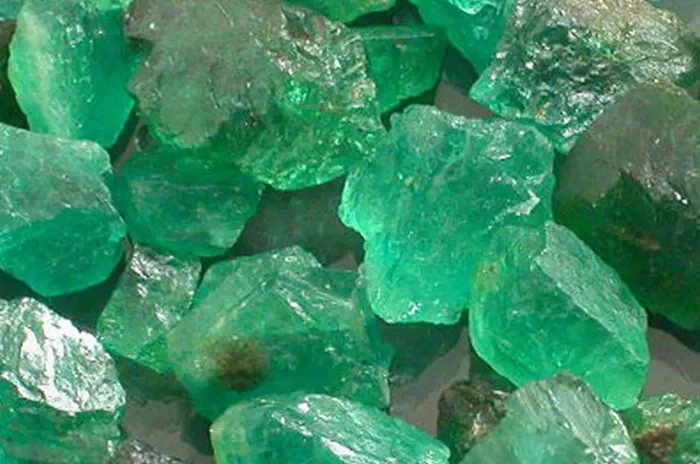Thuja occidentalis ‘Emerald Green,’ often referred to simply as Emerald Green Arborvitae, stands out as a popular choice among landscapers and homeowners alike for its vibrant foliage, easy maintenance, and versatility in various garden settings. A commonly asked question among enthusiasts revolves around its growth rate. Understanding the factors influencing the growth of Thuja Emerald Green is essential for planning and maintaining a thriving landscape. In this comprehensive article, we delve into the intricacies of its growth patterns, exploring the environmental, cultural, and biological factors that influence its development.
Introduction to Thuja Emerald Green
Before delving into its growth rate, it’s crucial to understand the characteristics of Thuja Emerald Green. Native to North America, particularly the eastern regions, Thuja occidentalis is a species of evergreen coniferous tree belonging to the Cupressaceae family. The ‘Emerald Green’ variety is a cultivar renowned for its compact, columnar shape, vibrant emerald-green foliage, and tolerance to various environmental conditions.
Factors Influencing Growth Rate
Several factors play a significant role in determining the growth rate of Thuja Emerald Green:
Climate and Environmental Conditions: Thuja Emerald Green thrives in a wide range of climates, from USDA hardiness zones 2 to 7. However, its growth rate may vary depending on factors such as temperature, humidity, sunlight, and soil conditions. Generally, it prefers full sun to partial shade and well-drained soil with adequate moisture.
Soil Quality and Drainage: Well-drained soil rich in organic matter promotes optimal growth of Thuja Emerald Green. Compacted or waterlogged soil can hinder root development and slow down growth. Regular soil testing and amendment with compost or organic matter can improve soil structure and fertility, facilitating healthier growth.
Watering Regimen: Adequate watering is crucial, especially during the establishment phase. Thuja Emerald Green requires consistent moisture but is susceptible to root rot in excessively wet conditions. A balance must be struck to ensure sufficient hydration without waterlogging the soil.
Pruning and Maintenance: Proper pruning and maintenance practices can influence the growth rate and overall health of Thuja Emerald Green. Regular removal of dead or diseased branches, as well as shaping to maintain desired form, can stimulate new growth and enhance its aesthetic appeal.
Fertilization: While Thuja Emerald Green is relatively low-maintenance, periodic fertilization can boost growth and foliage color. However, excessive fertilization, especially with high-nitrogen fertilizers, can lead to rapid but weak growth, making the plant more susceptible to diseases and pests.
Genetic Factors: The genetic makeup of Thuja Emerald Green also plays a significant role in its growth rate. While cultivars are selected for desirable traits such as compactness and vibrant foliage, individual variations may still occur within the population.
Understanding Growth Patterns
Thuja Emerald Green exhibits moderate to fast growth under optimal conditions. However, its growth rate may vary depending on factors previously discussed. Understanding its growth patterns can help anticipate and plan for its development in the landscape:
Initial Establishment: During the first few years after planting, Thuja Emerald Green focuses on establishing a robust root system. Growth during this phase may appear slow above ground as energy is primarily allocated to root development. Adequate watering, soil preparation, and mulching are essential during this critical period to support healthy growth.
Juvenile Growth: Once established, Thuja Emerald Green enters a phase of vigorous vertical growth, typically achieving 6 to 12 inches of growth per year under optimal conditions. Regular pruning may be necessary to maintain desired height and shape, especially if space is limited or a formal hedge is desired.
Mature Growth: As Thuja Emerald Green reaches maturity, its growth rate tends to stabilize, with annual growth averaging around 6 to 9 inches per year. However, factors such as environmental conditions, maintenance practices, and genetic variation can influence growth rate variability among individual specimens.
Response to Environmental Stress: Like any plant, Thuja Emerald Green may exhibit reduced growth or stress symptoms in response to adverse environmental conditions such as drought, extreme temperatures, or pest infestations. Monitoring and addressing environmental stressors promptly can help mitigate their impact on growth and overall health.
Practical Considerations for Growth Management
To optimize the growth and performance of Thuja Emerald Green in the landscape, several practical considerations should be taken into account:
Site Selection: Choose a planting site that receives adequate sunlight and has well-drained soil. Avoid areas prone to waterlogging or excessive shade, as these can hinder growth and increase the risk of disease.
Planting and Spacing: Proper spacing is essential to accommodate the mature size of Thuja Emerald Green and prevent overcrowding. Follow spacing recommendations based on the intended use, whether as a specimen plant, hedge, or screen.
Watering and Irrigation: Establish a regular watering schedule, especially during hot, dry periods and the initial establishment phase. Deep, infrequent watering is preferable to frequent shallow watering, as it encourages deeper root growth and drought tolerance.
Mulching and Soil Amendment: Apply a layer of organic mulch around the base of Thuja Emerald Green to conserve soil moisture, regulate temperature, and suppress weeds. Periodic soil amendment with compost or organic matter can improve soil structure and fertility, supporting healthy growth.
Pruning and Maintenance: Regular pruning and maintenance are essential to shape, thin, and rejuvenate Thuja Emerald Green as needed. Avoid heavy pruning during the growing season, as this can stress the plant and inhibit growth.
Monitoring and Pest Management: Keep an eye out for signs of pests, diseases, or environmental stress and take appropriate measures to address them promptly. Early detection and intervention can prevent significant damage and minimize the impact on growth.
Conclusion
Thuja Emerald Green is prized for its vibrant foliage, compact form, and versatility in various garden settings. Understanding its growth rate and the factors influencing it is essential for successful cultivation and maintenance. By considering climate, soil conditions, watering regimen, pruning, and other practical considerations, landscapers and homeowners can optimize the growth and performance of Thuja Emerald Green, creating vibrant and thriving landscapes for years to come.


